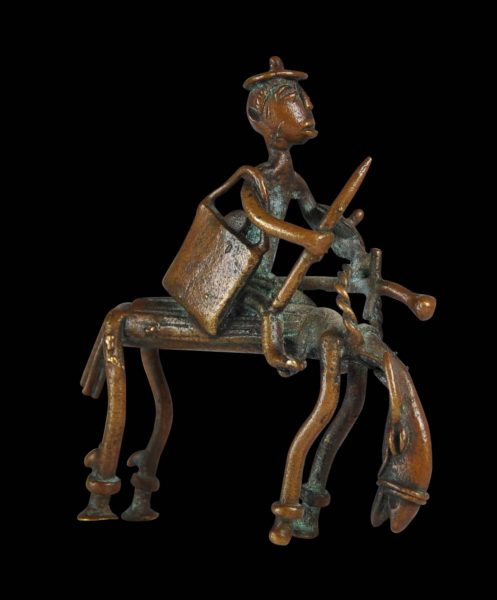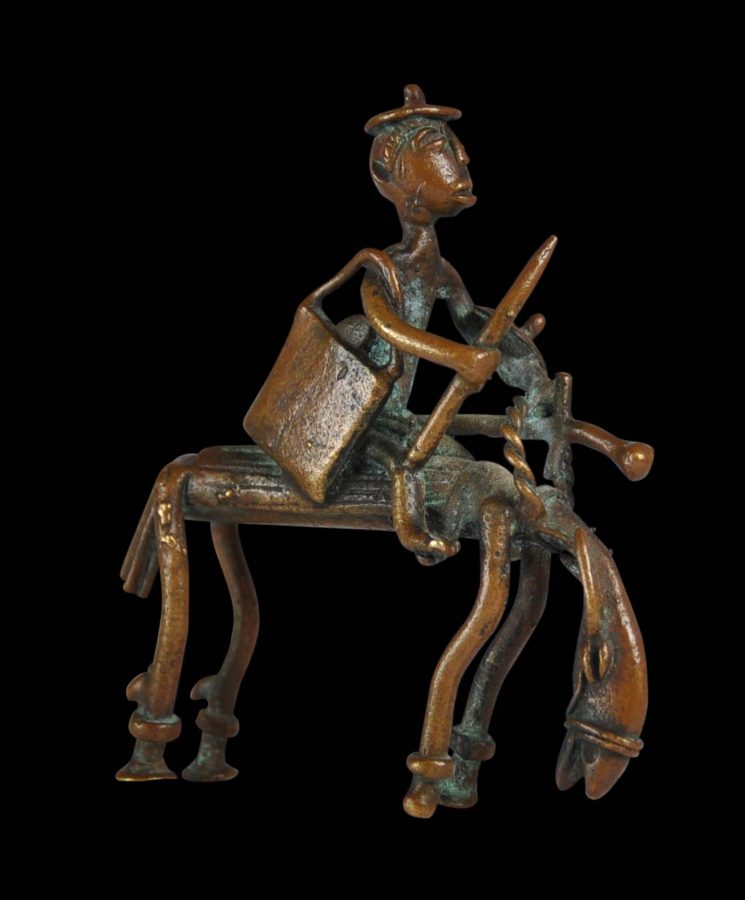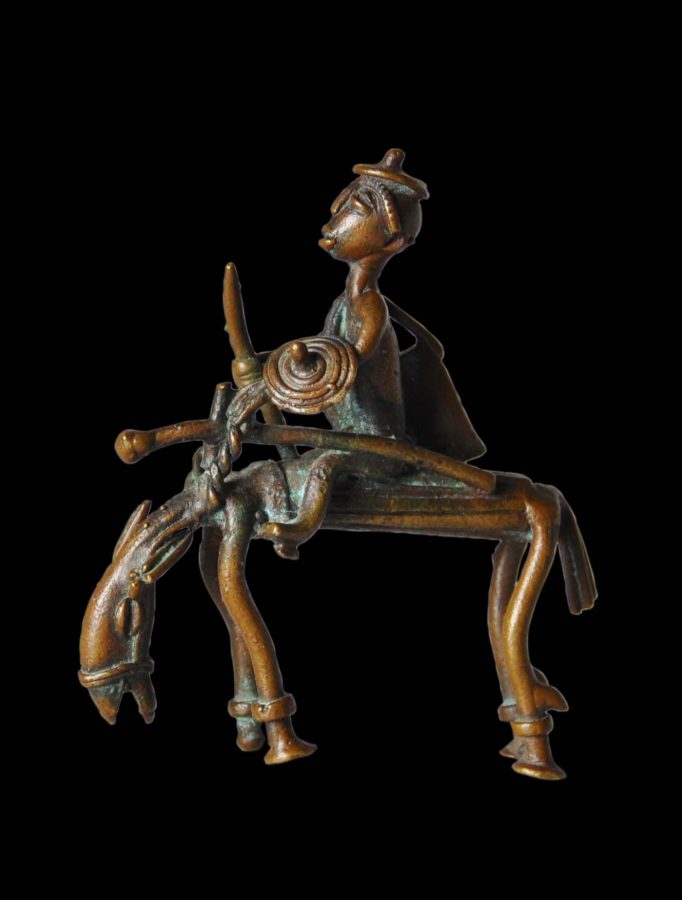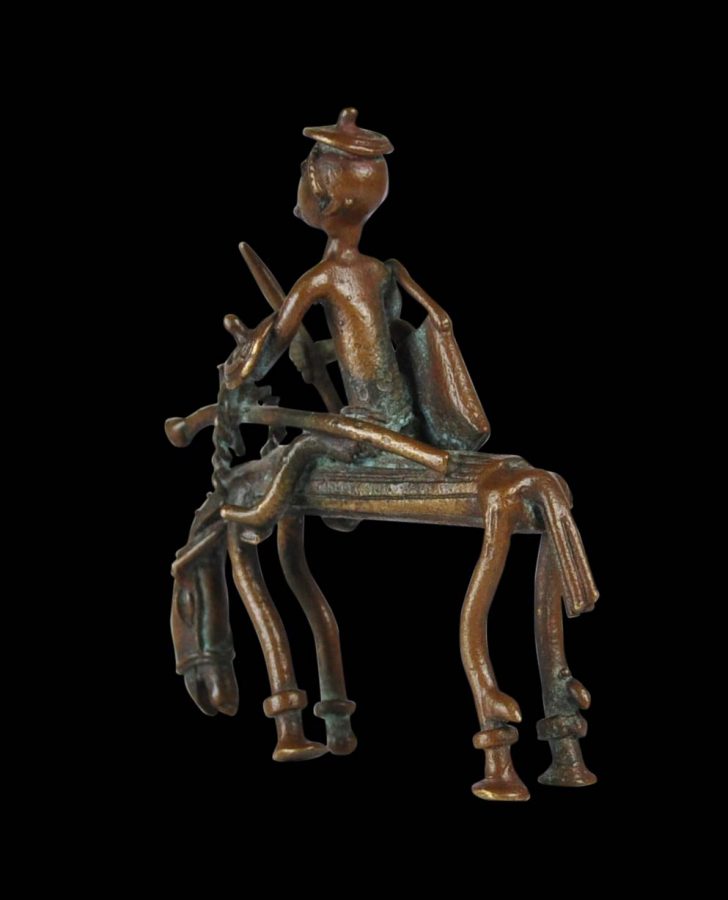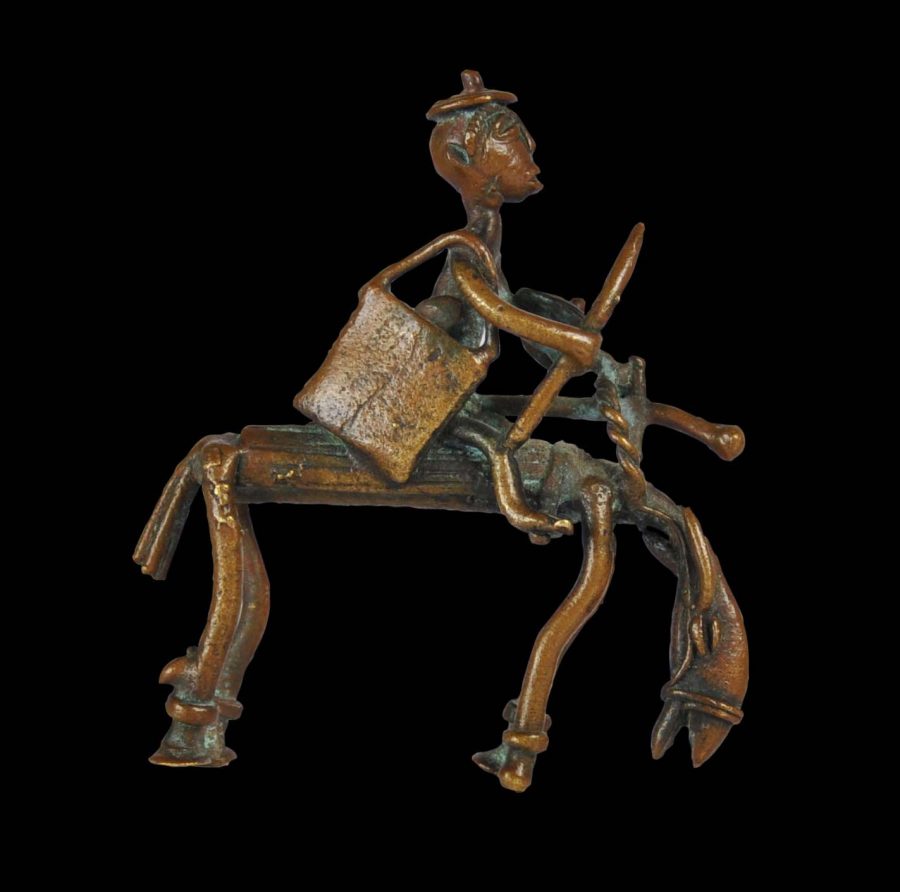This unusually fine, cast-brass gold dust weight is in the form of a horse and ride. West African gold dust weights are relatively common but fine examples are less common and this is one of the finest we have seen.
The rider is shown atop his horse. He carries a sword or stick, a shield, a large carrying bag over his shoulder and a circular hat.
Personal weights such as this example were used in Ghana and elsewhere in West Africa. Principally, small weights were used to weigh gold dust which became the currency used to settle everyday transactions. Each party to any transaction would typically use their own weights – largely because one could trust one’s own weights in the absence of any government certified weighing system. The negotiating process not only would include the cost in gold dust of the items being transacted over but a comparison of weights, debate over the scales used, and the purity of the gold dust (gold often was adulterated with brass filings). Even transactions as rudimentary as buying vegetables in a street market necessitated this process.
Gold weights were cast in brass or bronze. They were used by the Akan who occupy a large part of West Africa including parts of Ghana and the Ivory Coast and include many sub-ethnic groups such as the Baule and the Asante (Ashanti). Gold became an important commodity which gave rise to Ghana’s old colonial name of the Gold Coast. The region was known as the Gulf of Guinea, and in England, a gold coin worth twenty-one shillings became known as a guinea (Philips, 2010).
This example has an excellent chocolate-brown patina. There is a minor casting fault to one of the horse’s ears. And one of the hooves of the horse has been clipped off (a long time ago given its worn contours and patina.) This would have been done to adjust the item’s weight. Phillips (2010, p. 27) shows a horse weight attributed to the 18th century with various clippings and additions to adjust the weight as circumstances required.
References
Chemeche, G., The Horse Rider in African Art, Antique Collectors’ Club, 2011.
Cole, H. M. & D. H. Ross, The Arts of Ghana, Regents of the University of California, 1977.
Phillips, T., African Goldweights: Miniature Sculptures from Ghana 1400-1900, Edition Hansjorg Mayer, 2010.
Robbins, W.M. & N.I. Nooter, African Art in American Collections, Smithsonian Institution Press, 1989.
Walker, R.A. (ed.), The Power of Gold: Asante Royal Regalia from Ghana, Dallas Museum of Art, 2018.


